Hi everyone, ever dreamed of living in a home that practically runs itself? Thanks to the rise of smart home devices, that dream is now a reality — and more affordable than ever. In this post, we’re giving you a full smart home devices overview, covering the top 10 smart home devices that are making waves in 2025.
Whether you’re just starting your smart home journey or upgrading your current setup, this guide has everything — from the most unique smart home devices to everyday tools like Alexa smart home devices and must-have gadgets from Amazon. We’ll also highlight smart home devices examples for every room and budget, and show how a simple smart home app can connect it all.
From energy-saving plugs and app-controlled lighting to Amazon smart home devices and those compatible with Google smart home systems, the possibilities are endless. You don’t have to be tech-savvy to enjoy the benefits — these tools are designed to simplify your life, enhance security, and give you full control at your fingertips.
✅ Why Choose These Smart Home Gadgets?
✅ Simplify everyday tasks with voice or app control
✅ Boost home security and energy efficiency
✅ Create customized routines and automations
✅ Enjoy hands-free entertainment and comfort
✅ Make your space feel futuristic and fun
🔊 Amazon Echo Dot (Newest Model): Vibrant Sounding Alexa Speaker — Perfect for Bedrooms & Offices
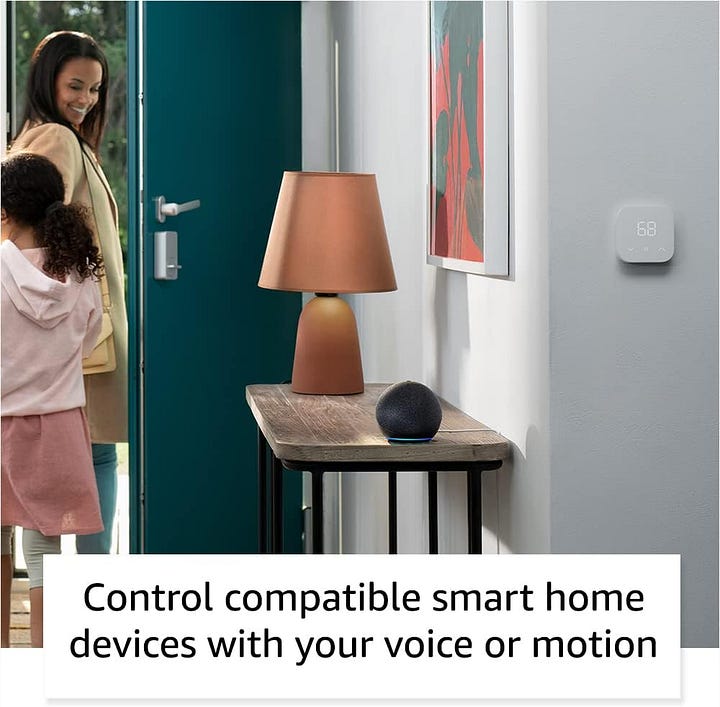
Overview:
The Echo Dot (latest gen) is Amazon’s most compact smart speaker, packing a punch with crisp vocals and balanced bass. It’s designed for small to mid-sized spaces like bedrooms, dorm rooms, and offices, offering voice control for music, weather, reminders, and smart devices via Alexa.
Pros:
✅ Compact and sleek design fits any space
✅ The improved speaker delivers surprisingly rich sound
✅ Affordable entry into the Alexa smart home ecosystem
✅ Great for alarms, routines, and quick voice commands
Cons:
❌ Not as powerful for whole-room sound compared to larger Echo devices
❌ Lacks a screen, so visual interactions like video calls are not possible
🛡️ eufy Security Video Doorbell Dual Camera — 2K HD, Wireless, Smart Recognition, No Monthly Fees

Overview:
This battery-powered doorbell from eufy offers not one, but two 2K cameras — one for face view, one for package detection. It uses AI to recognize humans, packages, and even pets. With 16GB of local storage and no subscription fees, it’s a cost-effective, privacy-respecting choice.
Pros:
✅ Dual-camera setup for better security coverage
✅ Smart AI detection of people and packages
✅ No monthly fees — comes with onboard 16GB storage
✅ Crisp 2K video quality with clear night vision
Cons:
❌ Requires HomeBase 2, which adds to setup complexity
❌ Limited integration compared to Ring or Nest ecosystems
📺 Amazon Echo Show 15 (Newest Model): Full HD 15.6” Smart Kitchen Hub with Alexa and Fire TV
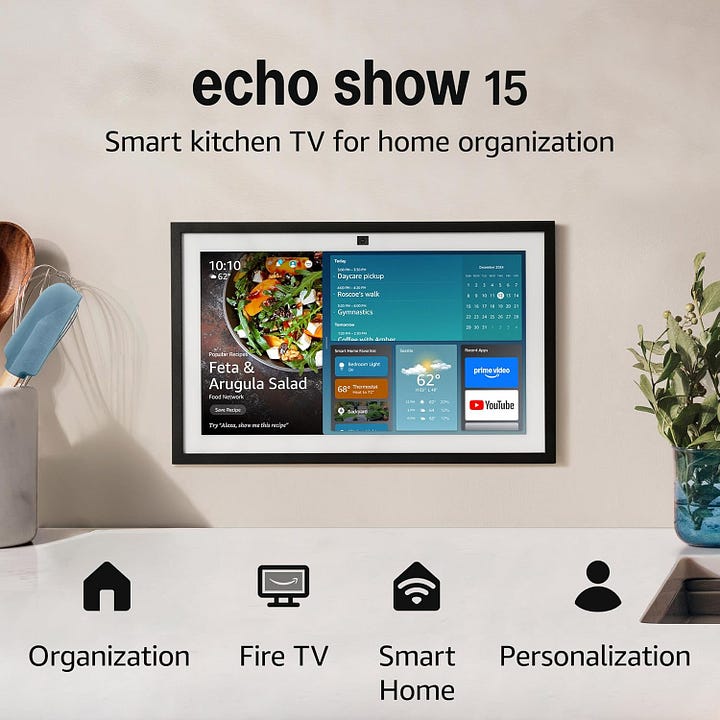
Overview:
This is more than just a smart display — Echo Show 15 is a wall-mountable, family-friendly smart hub. With Fire TV built in, you can stream Netflix or Prime Video while cooking. Widgets like sticky notes, calendars, and to-do lists help keep households running smoothly.
Pros:
✅ Massive screen with crisp Full HD display
✅ Built-in Fire TV turns it into a smart entertainment center
✅ Alexa visual widgets for calendar, notes, and home control
✅ Ideal for organizing busy family routines in shared spaces
Cons:
❌ Not very portable due to its size
❌ Wall mounting requires tools and planning
🔌 Amazon Smart Plug — Voice-Controlled Simplicity with Alexa
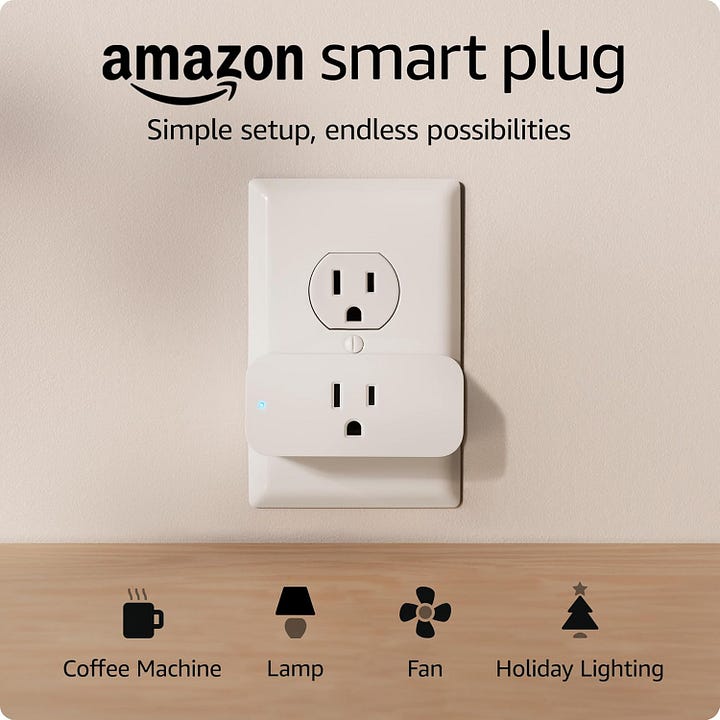
Overview:
The Amazon Smart Plug makes any appliance voice-controllable via Alexa. No hubs required. Just plug it into a standard outlet, connect via Wi-Fi, and start controlling lamps, coffee makers, or fans with a simple voice command.
Pros:
✅ Super easy setup in the Alexa app
✅ Works seamlessly with Alexa routines
✅ Compact, doesn’t block the second outlet
✅ Automates non-smart devices affordably
Cons:
❌ Only compatible with Alexa (not Google Assistant or HomeKit)
❌ Lacks energy monitoring feature
🌡️ Emerson Sensi Wi-Fi Smart Thermostat (Pro Version) — Energy Star Certified
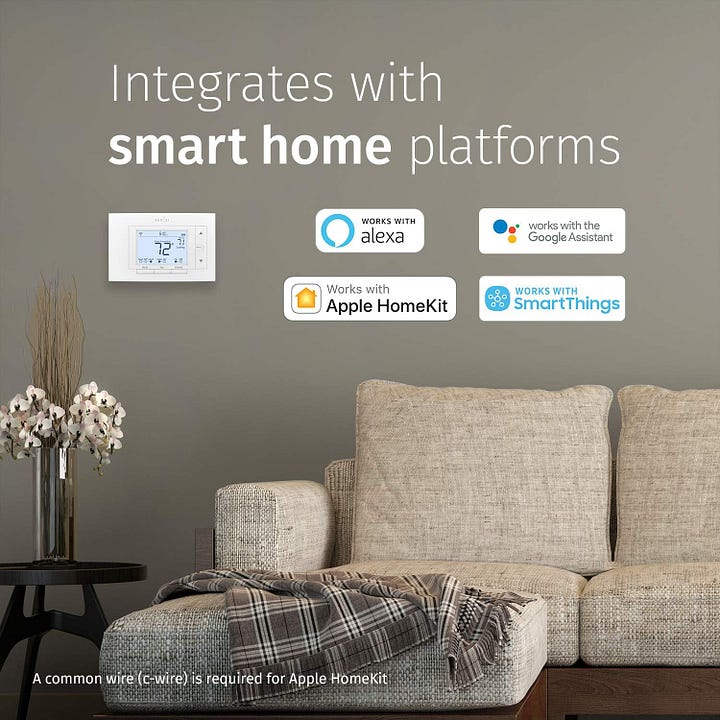
Overview:
This Energy Star-certified smart thermostat works with Alexa and helps reduce HVAC energy use with its intuitive scheduling and geofencing features. It offers remote access, usage reports, and a simple interface — ideal for both beginners and pros.
Pros:
✅ Easy DIY installation with step-by-step app guidance
✅ Compatible with most HVAC systems
✅ Energy usage tracking helps lower bills
✅ Reliable and responsive remote control
Cons:
❌ Display and interface feel basic compared to Nest or Ecobee
❌ No built-in voice control (requires Alexa or Google device)
📹 Blink Outdoor 4 (Newest Model) — Wireless Security Cam with 2-Year Battery Life

Overview:
Blink Outdoor 4 is a compact, weather-resistant security cam that runs for up to two years on AA batteries. It streams in 1080p HD, offers motion alerts, and includes two-way audio for real-time communication — all accessible from the Blink app.
Pros:
✅ Truly wireless setup with long-lasting battery
✅ Works with Alexa and integrates well with the Echo Show
✅ Customizable motion zones
✅ Budget-friendly home security solution
Cons:
❌ Limited free cloud storage without a subscription
❌ 1080p video is decent, but not as sharp as 2K/4K models
🎵 Sonos Era 100 — Premium Wireless Alexa-Enabled Smart Speaker
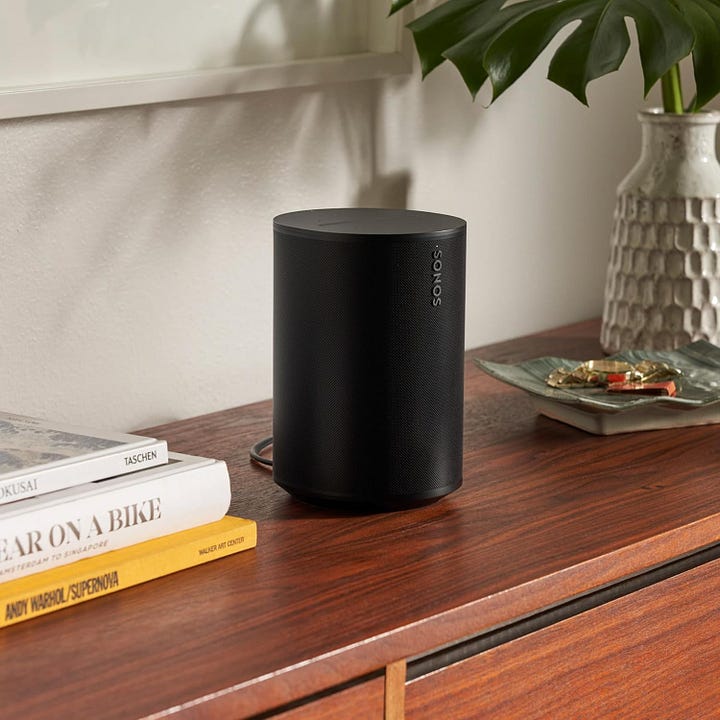
Overview:
The Sonos Era 100 delivers rich, room-filling sound in a compact form. With built-in Alexa, it can double as a smart assistant and music hub. Sonos’ Trueplay tuning ensures optimized audio for any room layout.
Pros:
✅ Exceptional sound clarity and stereo separation
✅ Sleek, modern design fits any decor
✅ Supports Wi-Fi and Bluetooth
✅ Alexa voice control built in
Cons:
❌ On the pricey side
❌ No battery option — must remain plugged in
📱 Google Smart Display (2nd Gen) — 7” Touchscreen HD for Smart Control & Streaming
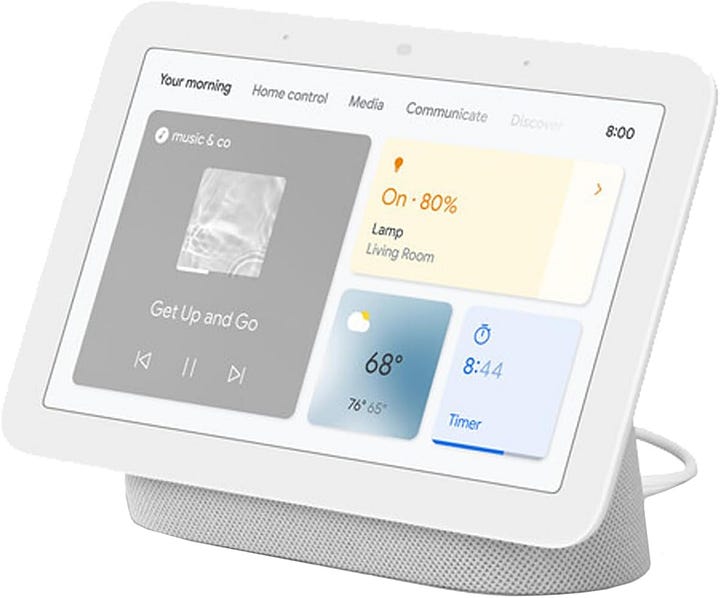
Overview:
This 7-inch smart display from Google is perfect for video calls, YouTube streaming, and managing smart devices. It features intuitive controls, clear visuals, and tight integration with Google services like Calendar and Photos.
Pros:
✅ Clean, simple interface
✅ Works with Google Assistant for voice commands
✅ Compact yet functional display for smaller rooms
✅ Great for Google ecosystem users
Cons:
❌ Not compatible with Alexa
❌ A smaller screen may feel limiting for heavy multitasking
🔌 Kasa Smart Plug Ultra Mini (EP10P2) — 2-Pack Wi-Fi Outlet, Alexa & Google Compatible
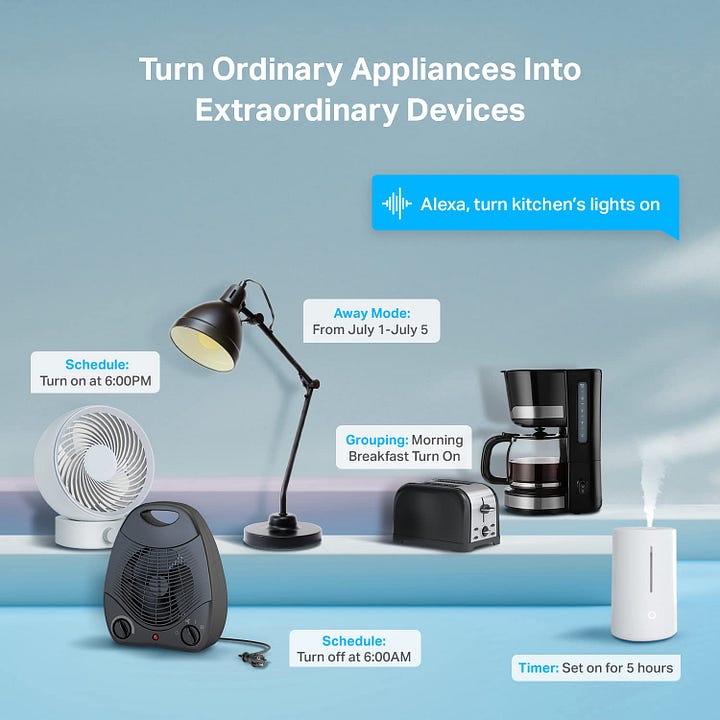
Overview:
Kasa’s ultra-mini smart plugs let you control devices remotely using Alexa, Google Home, or the Kasa app. They’re reliable, easy to install, and perfect for lamps, coffee makers, or any plug-in appliances.
Pros:
✅ Compact design saves outlet space
✅ Supports scheduling, countdown timers, and away mode
✅ Works with Alexa, Google, and IFTTT
✅ Excellent value for a 2-pack
Cons:
❌ 2.4GHz Wi-Fi only (not 5GHz supported)
❌ No energy monitoring built-in
📺 Amazon Echo Show 8 (Newest Model) — With Spatial Audio, Smart Home Hub, and Alexa
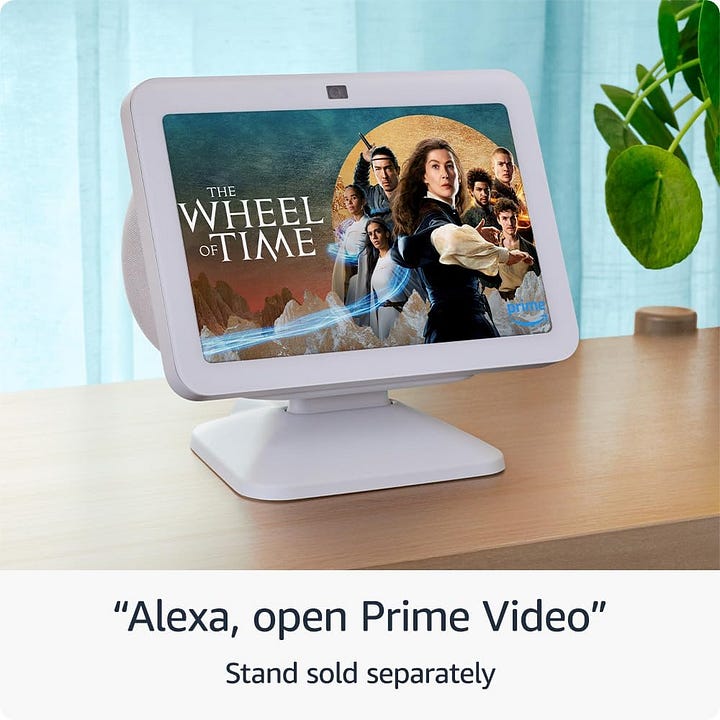
Overview:
This mid-size smart display strikes a balance between performance and portability. The Echo Show 8 comes with spatial audio, a camera cover, and serves as a Zigbee smart home hub. It’s excellent for video calls, recipes, and smart control.
Pros:
✅ Rich, immersive sound with spatial audio
✅ Crystal clear 13MP camera with auto-framing
✅ Smart home hub support without needing an extra bridge
✅ Perfect for kitchens, bedrooms, or living rooms
Cons:
❌ No Google Assistant support
❌ Can feel bulky on small surfaces
🌬️ GoveeLife Mini Air Purifier — HEPA Filter with Alexa Control
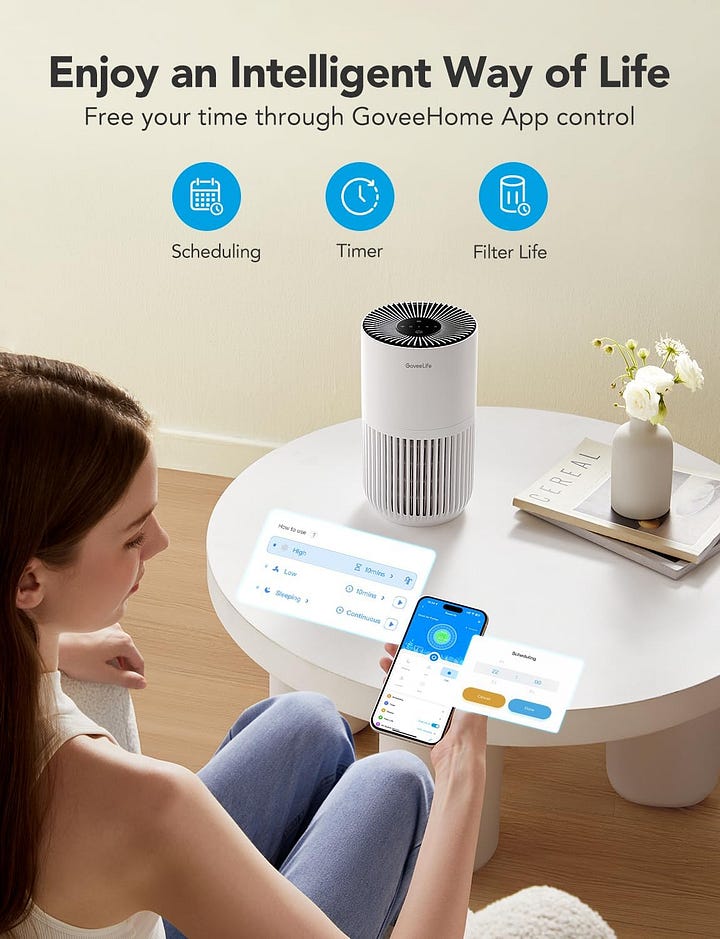
Overview:
This portable air purifier helps eliminate pet dander, odors, smoke, and allergens from small rooms. With app and Alexa control, you can adjust speed, set timers, or switch to sleep mode remotely. It even has a built-in aroma pad!
Pros:
✅ Compact, quiet, and effective for bedrooms
✅ HEPA filter captures 99.97% of airborne particles
✅ Smart control via app or Alexa
✅ Includes timer, night mode, and aroma function
Cons:
❌ Not powerful enough for large living rooms
❌ Needs filter replacements every few months
💡 Kasa Smart Light Bulbs (KL125P4) — Multicolor, Dimmable, No Hub Required
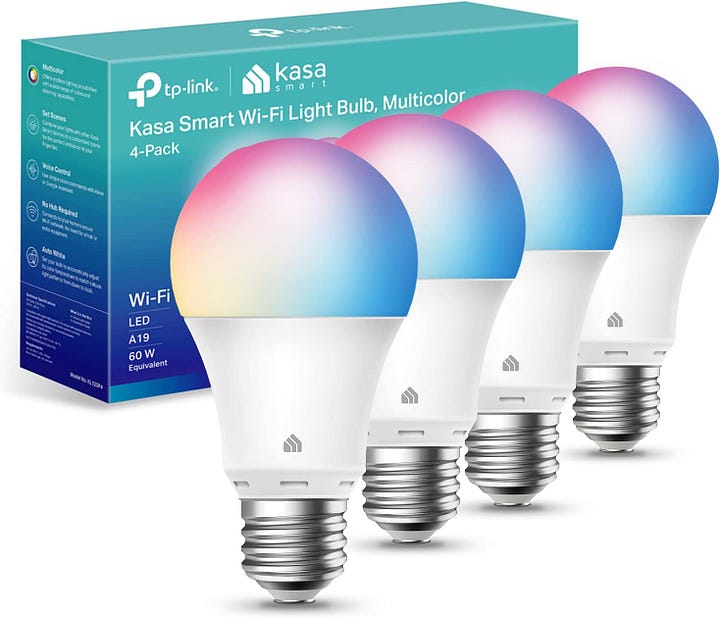
Overview:
These full-color LED bulbs from Kasa are Wi-Fi-enabled and allow you to change lighting scenes with your voice or smartphone. Great for mood lighting, holiday decor, or simply scheduling daily routines.
Pros:
✅ 16 million colors + dimmable white light
✅ Works with Alexa and Google Assistant
✅ Easy setup, no hub needed
✅ Great for ambiance, parties, or routines
Cons:
❌ Limited to 2.4GHz Wi-Fi
❌ Bulbs must be left powered on to receive commands
In today’s fast-paced world, a smarter home means more convenience, security, and peace of mind. Whether you’re looking to automate your mornings, upgrade your home’s energy efficiency, or control everything with just your voice, these best smart home devices are the perfect solution.
With so many options available — from Amazon smart home devices to Google-integrated tech — there’s never been a better time to build a connected, intelligent home. So why wait? Start small or go all in — either way, you’re one step closer to a home that works for you.
FAQ:
1. What are smart home devices?
Smart home devices are electronic appliances and gadgets that connect to a central network (usually Wi-Fi) and can be controlled remotely, often through a smartphone app, voice commands, or automated schedules. They are designed to enhance convenience, security, energy efficiency, and entertainment in a home.
2. What are the most common types of smart home devices?
Common types include:
- Smart speakers and displays: Such as Amazon Echo and Google Nest Hub.
- Smart lighting: Bulbs or switches that can change brightness and color.
- Smart thermostats: For automated climate control (e.g., Nest, Ecobee).
- Smart security cameras and video doorbells: For monitoring and access control.
- Smart plugs: To make regular appliances “smart.”
- Smart locks: For keyless entry and remote access management.
3. How do smart home devices work together?
Smart home devices typically connect through your home Wi-Fi network or other protocols like Zigbee, Z-Wave, or Bluetooth. They are often managed by a central hub or a smartphone app. Many can also integrate with voice assistants (like Amazon Alexa or Google Assistant) to create automated routines and scenes, allowing devices from different brands to work in harmony.
4. What are the main benefits of having a smart home?
Benefits of a smart home include:
- Convenience: Control devices from anywhere, automate routines.
- Energy Efficiency: Optimize lighting and climate control to save energy and money.
- Enhanced Security: Monitor your home, receive alerts, and control access remotely.
- Comfort: Adjust lighting, temperature, and entertainment to your preferences.
- Accessibility: Assist individuals with mobility challenges through voice control and automation.
5. Is installing smart home devices complicated?
Many modern smart home devices are designed for easy, DIY installation, often just requiring plugging in and connecting to an app. More complex systems like integrated security or whole-home automation might benefit from professional installation, but most individual devices (lights, plugs, thermostats) are straightforward.
6. Are smart home devices secure from hacking?
Security is a critical concern for smart home devices. Reputable manufacturers implement encryption and regular software updates to protect data. Users can enhance security by using strong, unique passwords, enabling two-factor authentication, and regularly updating device firmware. It’s also advisable to use a separate Wi-Fi network for smart devices if possible.
7. What’s the difference between a smart speaker and a smart display?
A smart speaker primarily offers audio output and relies on voice commands for interaction (e.g., playing music, answering questions). A smart display combines the functionalities of a smart speaker with a touchscreen, allowing for visual feedback, video calls, recipe viewing, and controlling smart devices with a graphical interface.
8. Can smart home devices save me money?
Yes, they can. Smart thermostats can learn your habits and optimize heating/cooling to reduce energy consumption. Smart lighting can automatically turn off when rooms are empty. Smart plugs can cut power to electronics when not in use, reducing “vampire drain.” These savings can add up over time.
9. What should I consider before buying smart home devices?
Before purchasing:
- Compatibility: Ensure devices work with your chosen smart home ecosystem (e.g., Alexa, Google Home, HomeKit).
- Connectivity: Check your Wi-Fi strength and consider if you need a hub.
- Privacy: Understand data collection policies of manufacturers.
- Features: Prioritize features that genuinely meet your needs.
- Reviews: Read user and expert reviews for reliability and performance.
- Scalability: Can you easily add more devices in the future?
10. Where can I buy reliable smart home devices?
Reliable smart home devices are available at:
- Major electronics retailers: Like Best Buy, Currys, or MediaMarkt.
- Online marketplaces: Such as Amazon, Walmart, or Target.
- Manufacturer’s direct websites: For brands like Google, Amazon, Philips Hue, Ring, etc.
- Home improvement stores: For smart thermostats, locks, and lighting.
Look for well-known brands and products with good warranty and customer support.
.png)

.png)